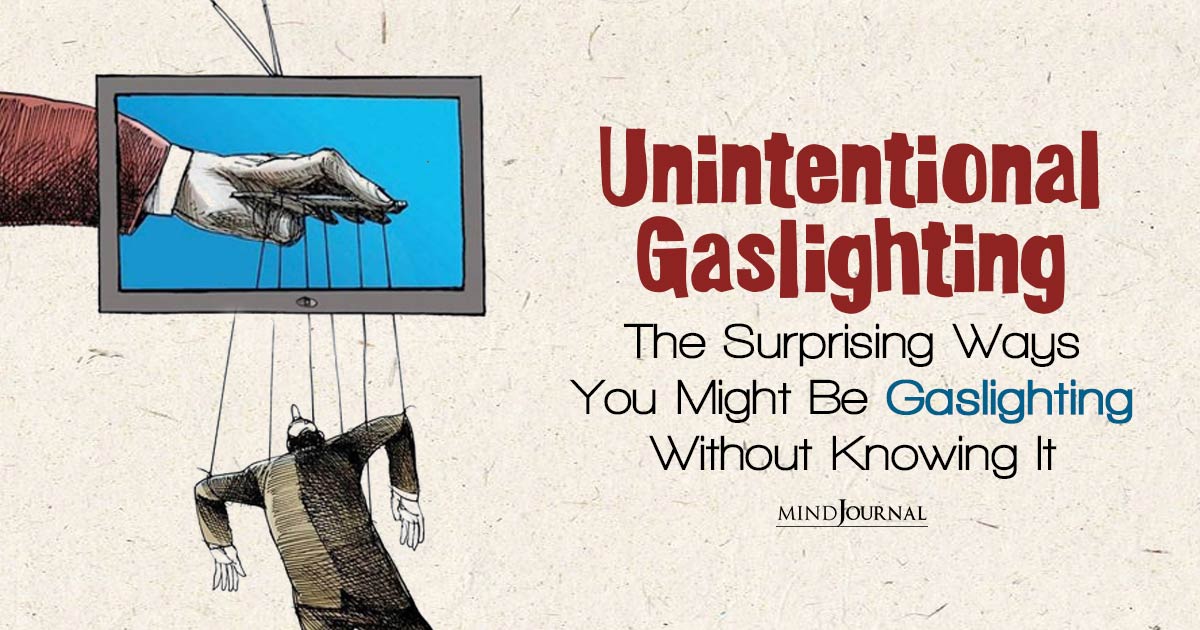Are you in a chaotic or energy-sucking relationship? If so, you need to know about the social / relationship disorder known as “Amorphia”!
Do you have a friend, partner or parent who spews their emotions, crosses boundaries or manipulates the relationship according to their needs? If so, they may be suffering from the social/relationship disorder called Amorphia!
The term “Amorphia” is derived from the word amorphous which means “indefinite character without defined shape or form; lacking clear structure, boundaries or focus.” Although the word “amorphous” is most commonly used to describe undefined circumstances or shapeless substances, such as clouds or chemicals, people can also have amorphous tendencies. In fact, in many cases, amorphous behaviors can turn into a social dysfunction that negatively affects relationships.
Related: 8 Major Twin Flame Stages – Are You Experiencing This?
Even though I usually prefer to avoid labels, I also know that it’s impossible to heal a relationship without first identifying the core issue. As a result, I have personally coined the term “Amorphia” to describe this relationship dynamic.
So, what exactly is Amorphia?
ou know all those people who drain your energy? Well, in all likelihood, many of them suffer from some degree of Amorphia, and, therefore, they can be defined as “Amorphics”! Although severe Amorphics are often described as “energy-sucking vampires,” in most cases, the signs and symptoms of Amorphia are more subtle.
Although Amorphia can manifest as a wide range of behaviors, it can be defined as the misuse and abuse of energy, and this means that Amorphic people are not responsible with their energy (aka emotions, behaviors actions, etc…).
Related: 4 Ways To Make Him Feel Weak and Crazy About You
For instance:
1. Amorphics are often unpredictable and unable to commit to even simple choices, and because they have poor follow-through, many don’t honor the commitments or choices they do make.
2. Amorphics often display inconsistent behavior and cannot be pinned down, and because they want to keep their options open, they may say one thing and do another.
3. While having poor boundaries, Amorphics frequently shift responsibility and use their emotions to manipulate others.
4. Since many Amorphics don’t value other people’s time and energy, they’re known to be insensitive or undependable (they are often late for appointments).
5. Amorphics can change their mind in a flash without any discussion; not even communicating with those involved.
Even though many Amorphics don’t understand how their behavior negatively affects others, the combination of mixed messages and broken promises results in ongoing arguments and chaotic relationships.
Chances are, if someone is not consciously using their energy, they’re unconsciously abusing it!
Projectors vs. Sponges
Although Amorphia can show up in many different ways, Amorphics can be divided into two distinct categories:
- Amorphic Projectors
- Amorphic Sponges
While Amorphic Sponges absorb, distort and/or project energy, they are more likely to be overly sensitive “people pleasers,” and while Amorphic Projectors project and distort energy, they are noticeably insensitive and more likely to develop narcissistic tendencies.
Amorphic Sponges seek approval, acceptance, appreciation, validation, etc…, and in order to get one or more of these emotional needs met, they may change their behavior to please others; this often results in self-suppression and disempowerment.
Amorphic Projectors seek respect and recognition in order to feel superior, and they always have to be right. Since they have to control the energy in any room or relationship, they often use their energy to over-power and suppress others.
Related: Which Emotional Type Are You? Here’s How to Find Out
While Amorphic Sponges need others to lift them up, Amorphic Projectors use others to lift them up.
The 4 Dynamics of Amorphia
Despite their differences, Projectors and Sponges share many common traits, and, in fact, they both misuse their energy in the same four ways.
So, unless otherwise specified, the following applies to both types of Amorphics.
#1 – Emotions
Both Amorphic Projectors and Amorphic Sponges project their energy through emotions – often using their emotions to manipulate others. While Amorphic Projectors are more likely to project anger, frustration, etc… and Amorphic Sponges are more likely to project sadness, disappointment, etc…, guilt and obligation are commonly used by both.
Related: 8 Ways You Can Regulate Your Emotions
Since Amorphics project their energy/emotions onto others, if they’re feeling something, they want others to feel it too, and, in fact, it’s common for Amorphics to make other people responsible for their emotions. For example, it’s common to hear Amorphics say things like, “You made me angry.” By spewing blame and disappointment, they also make others responsible for their happiness.
Although some Amorphics wear their emotions on their sleeves, many are emotionally unavailable and hide their emotions. It’s also common for Amorphics to be emotionally reactive and quickly jump to conclusions. So, if something goes right, they’re happy, and if something goes wrong, they’re distraught.
Moreover, Amorphics may try to enroll others in their story by chronically validating their fears with “horror stories,” thereby manipulating people to feel what they feel. For example, if an Amorphic person is afraid of dogs, they may frequently share stories about random dog attacks.
Related: How to Understand your Emotions Better and Be More in Touch with Them
Although Amorphics may spew their fears without ulterior motives, many intentionally provoke fear in order to control a partner’s, friend’s or child’s choices. For instance, to convince a partner not to go out with friends after work, an Amorphic partner may start talking about a local crime trend.
Furthermore, the Amorphic Sponge is an “energetic sponge” who takes on other people’s energy, emotions, and drama, and this means that if a friend or relative is sad, they’re sad. As a result, many Amorphic Sponges are ungrounded and emotionally unstable. In fact, they may expect a significant other to ground them or play the responsible adult.
On the other hand, the Amorphic Projector often diverts other people’s energy and may not seem to care how anyone feels – this dynamic results in, what appears to be, self-righteousness and a lack of compassion.
#2 – Responsibility
Rather than taking responsibility for their own lives, it’s common for both types of Amorphics to shift responsibility. Therefore, instead of taking responsibility for bad choices or negative circumstances, Amorphics either portray themselves as victims or justify their behavior with excuses.
By making others responsible for their feelings, they naturally project expectations, and when those expectations are not met, they project blame and disappointment.
So, no matter what happens, they have a distorted sense of responsibility.
However, even though Amorphics don’t take responsibility for their own lives, they may somehow believe that they have the right to manipulate others, and, when this is the case, they can either be over-protective people pleasers who feel responsible for everyone (aka Sponges) or over-bearing control freaks who always know best (aka Projectors)!
In addition to their emotions, Amorphics often manipulate others through judgment and blame, and if those strategies don’t work, threats and consequences are common. For instance, they might threaten to withhold love or approval, and if they don’t get their way, follow through accordingly. And, when all else fails, some Amorphics resort to suicidal threats, possibly escalating to tangible plans, and this means that the Amorphic person makes another person (usually a romantic partner) responsible for whether they live or die.
Related: 8 Tricks Narcissists Play To Manipulate Their Victims
While Amorphic Sponges are more likely to hurt themselves, Amorphic Projectors are more likely to hurt others. Believing that they have the right to over-power or control another person, in extreme cases, Amorphic Projectors use their energy to violate others, and this can manifest as anything from bullying and verbal threats to physical violence.
Furthermore, whenever you see domestic violence, there’s always an Amorphic Projector acting as the abuser and an Amorphic Sponge portraying the victim.
#3 – Communication
By sharing too much information or asking inappropriate/personal questions, Amorphics can make people feel uncomfortable, and, furthermore, many Amorphics consistently ignore social signals.
Related: 12 Important Life Hacks To Improve Communication In Your Relationships
On the other hand, in order to remain non-committal, some Amorphics share too little information. In fact, based on their needs or a desired outcome, Amorphics might omit pertinent information altogether, and, as a result, they’re often accused of lying.
Since the person who withholds information has greater power, their friends, relatives and colleagues are often at a disadvantage.
Furthermore, because Amorphic Projectors don’t consider the needs or wants of others, they often make choices without consulting those involved, and if they always have to be right, everyone else has to be wrong.
Not surprisingly, Amorphics often make their partners (and others) feel like they’re going crazy!
Related: Soul Communication: 7 Ways Your True Self is Trying to Guide You
#4 – Boundaries
Both Amorphic Projectors and Amorphic Sponges have unclear boundaries, and many don’t know where they begin and others end.
While Amorphic Projectors may take advantage of others, Amorphic Sponges may allow people to take advantage of them.
Not knowing how to respect (or recognize) another person’s boundaries, both types of Amorphics often infringe their needs upon others, and this means that they may regularly expect help, support, money, etc…, and, in fact, they may chronically borrow money and default on promises of repayment.
Related: 9 Essential Core Boundaries To Set In Relationships, Work and Life
Furthermore, if the Amorphic Sponge is emotionally needy or constantly seeking approval, others may experience his or her “energy” as an infringement in their space.
Since many Amorphics don’t respect privacy, they’re often found eaves-dropping or breaking into private emails. By getting into other people’s business, they frequently interfere where they don’t belong, and depending upon their intention, this can manifest as anything from unsolicited advice to downright manipulation. And, while the lines are blurred, this type of behavior can easily escalate into stalking.
Moreover, when Amorphics don’t respect physical space, it’s common for them to stand too close to other people or demonstrate inappropriate touching. On the other hand, it’s also common for Amorphic Projectors to hide behind a big wall, and by projecting “defensive energy,” keep everyone at a distance.
Related: 9 Essential Core Boundaries To Set In Relationships, Work and Life
Additionally, with or without physical touching, some Amorphics use sexual energy as a form of manipulation, and in extreme cases, this can result in sexual harassment or assault.
By “manipulating” the boundaries of an intimate relationship, and justifying infidelity, Amorphics are more likely to cheat on their partners.
Role dysphoria is also common among Amorphics, and when this is the case, they may inappropriately take on the role of a parent or child.
The good news is that, in most cases, Amorphia has a cure!
Here’s How to Heal an Amorphic Relationship
If you’re in a relationship with an Amorphic, it’s safe to say that you’re in an Amorphic Relationship. However, once you understand the underlying dynamics, it’s possible to heal the relationship.
As the friends, partners and relatives of Amorphics, we often unknowingly perpetuate certain dynamics with our own behavior, and, therefore, by identifying and changing certain behaviors in ourselves, we have the power to heal our Amorphic Relationships.
So, if you’re the partner, friend or relative of an Amorphic, here’s what you need to do:
First, identify Amorphic patterns by pinpointing the ways in which Amorphia is showing up in your relationship.
Second, identify the hidden costs: energy draining, disruptive, frequent arguments, chaos, lack of intimacy, etc…
Third, identify your role in the Amorphic Relationship by answering the following questions:
- Do you have unclear or non-existent boundaries?
- Do you ever undermine your own worth?
- Do you feel responsible for the Amorphic and his or her feelings?
- Are you a people pleaser who doesn’t want to disappoint others?
- Do you ever change, or hide, certain behaviors in exchange for approval or acceptance?
- Do you ever change, or hide, certain behaviors in order to avoid guilt?
- Do you ever change, or hide, certain behaviors in order to avoid someone’s anger, frustration or disappointment?
- Are you afraid of consequences and threats (especially from the Amorphic Projector)?
If you answered yes to any of the above, you’ve spotlighted, at least, some of the ways in which you might be perpetuating an Amorphic Relationship.
Fourth, if you want to change an Amorphic’s behavior and heal an Amorphic Relationship, you must first change complementary behaviors in yourself!
For example, when it comes to an Amorphic partner, friend or parent:
- Don’t be a people pleaser.
- Don’t try to prove your worth.
- Don’t allow yourself to be controlled by emotions.
- Don’t be manipulated by guilt and obligation.
- Don’t change or hide certain behaviors to avoid an Amorphic’s anger, disappointment, etc…
- Don’t take responsibility for an Amorphic’s
- Don’t take responsibility for an Amorphic’s
- Don’t change your behavior in exchange for approval or acceptance.
- Don’t inhibit your behavior because you’re afraid of consequences or threats.
- If you believe that you’re in a dangerous situation, get professional help to get out.
Boundaries are Non-Negotiable!
Furthermore, if you’re in a relationship with an Amorphic, set and enforce clear boundaries. Since you can’t assume that someone will know exactly what you mean, always spell it out!
For example:
- If you want your privacy respected, be perfecting clear that it includes no snooping, ease-dropping and interfering.
- If you want to create positive and upbeat relationships, set a boundary that says no judgment or negativity.
- If you want others to value your time, request that they keep their commitments, arrive on time and communicate changes promptly.
When one of your boundaries is crossed, make sure to respond immediately. If you wait to talk about it, your Amorphic partner, a friend of relative might deny that it ever happened or reinterpret the event. Therefore, immediately pinpoint the Amorphic behavior and clearly state the boundary that’s been crossed – be clear and decisive without getting into a debate.
Related: What To Do When Boundaries Are Crossed In Marriage
Remember, if you want others to respect your boundaries, you must also respect theirs.
Last but not least, cultivate the ability to say “no” and always be “at choice” for all you do and don’t do.
No doubt, it can take time to transform an Amorphic Relationship, and some relationships may need to end, but with love and patience, many relationships can endure – and even thrive.
Enjoyed reading the article? Let me know in the comments below. Also share it with your friends.
Written by: Nanice Ellis
Originally appeared on: Wake Up World
Published with permission.
Copyright: Nanice Ellis 2019. All rights reserved
Free 7-Part Spiritual Awakening Series with Nanice
No matter where you are on your path, this intensive series will support your journey to awakening.
Sign up now at www.nanice.com/awaken









Leave a Reply
You must be logged in to post a comment.